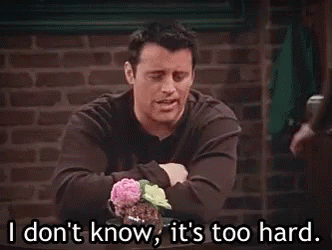Dear Readers,
I did it. I taught an inquiry lesson. It took two weeks of:
- planning
- writing
- calls back and forth
- Facetime
- Meetings
- Emails
- Trips to the dollar store
- Material prep
- Venting to my mom
- Strategizing
- Prioritizing
- Compromising
 |
| My head was spinning |
I learned a lot, and sharpened some skills I know I had already. One thing I definitely took away from this experience is the necessity of flexibility and a keen handling of time management. There was so much my group wanted to include, so many new things we had learned that we wanted to display but the hard constraint of time was a huge issue. On top of the four minds coming together to create one lesson plan, Dr. Smornova also wanted to include a kahoot to give summative data for all the groups. We had to come up with a way to include everything we needed, and then allow time for the kahoot. This took some deep thinking, some strategy, and open communication.

I took the role of framing out the inquiry lesson. I had not written one before but I was up for the challenge. After I finished the frame of our lesson plan, my colleague Kyle went in and added necessarily elements and his ideas. From there we workshopped with the entire group and came up with something we were all proud of. The direct instruction required the same type of collaboration but that was headed by the other group mates, Leanna and Michelle.
Then, we prepped materials, printed, cut paper, and came in early to set up.
After all of this work, it was finally showtime.
The direct lesson went well. This was such a relief. Our timing worked, we all knew our roles. Two things I would have changed
1: I attempted a fun check for understanding of having the kids stand up/sit down instead of thumbs up/down and it didn't go exactly as planned. If i attempt this one again, I will lay the expectations of the exercise more clearly.
2: I would reframe the content being taught. The unit plan I have in mind takes this information in another direction than the one we taught. I think the lesson was a good lesson on its own but with the context of my larger goal, I would change the goal to be identifying what environments are best suited for renewable energies. I would focus more on where windmills work best and why they work best there and take a half step back from explaining energy and the mechanics of the machines.
Other than these tweaks, I would say the kids were very engaged in the lesson. We learned a lot form the groups that went before us and delivered the best lesson we could. I am truly proud of my colleagues successes.
Then came inquiry.
I know it was an hour long lesson but it felt like 10 minutes. I was so focused on this lesson, and timing, and getting everything done that I felt like time just flew by.
Setting the expectation of this lesson before we transitioned was critical to the success of the objective. We had the kids attention and it was best to explain it as a group. I made a mental note of this success. When we broke off into groups, the kids knew exactly what to expect.
The group I had were enthusiastic about building and clearly took so much joy from building these pinwheels. They were happy to test and build and restest and build again. I was thrilled to see how our lesson was going.
After our test, we had the kids face off and see who build the best pinwheel. There were two winners, and the kids seemed to really like this activity. Then we needed them to write their letters. This was a little more challenging, we didn't have enough time to properly support this task, some students told me they weren't finished but we had to move on to get to the end of the session. I could see their thought process and where they were going with their letter. We are still able to use this as data.
Finally, we herded the kids into the computer room and gave them the final kahoot. This was chaos. I wasn't expecting anything else. They were having fun, I was yelling to get them to hear me. Honestly, they seemed like they had a great time and we were able to see how much they had learned from the course of this program.






